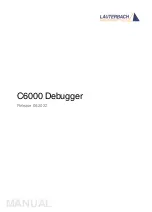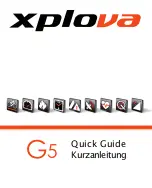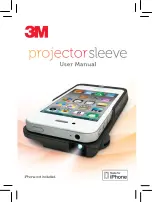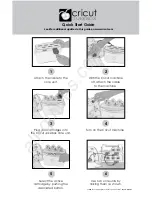
58
Mounting and Operating Instructions CEAG Battery Cabinets
40071860035 (N) March 2016 www.ceag.de
7 Commissioning
2.9
Electrolyte
The electrolyte is diluted sulphuric acid and fixed
in
a
glass
mat
for
AGM
products
or
in
a
gel
for
Sonnenschein products.
3.
Battery maintenance and control
Keep the battery clean and dry to avoid creeping
currents. The cleaning should be carried out acc.
to the information leaflet „Cleaning of batteries“
published
by
ZVEI
(German
Electrical
and
Electronic
Manufacturer
Association,
Wo rking
Group „Industrial Batteries“). Plastic parts of the
battery,
especially
containers,
must
be
cleaned
with pure water without additives.
At least every 6 month measure and record:
–
Battery voltage
–
Float voltage of several cells/blocks
–
Surface temperature of several cells/blocks
–
Battery-room temperature
Annual measurement and recording:
–
Battery voltage
–
Float voltage of all cells / blocks
–
Surface temperature of all cells/blocks
–
Battery-room temperature
–
Insulation-resistance acc. to DIN 43539 part1
2V
4V
6V
8V
12V
Marathon L
+ 0.2/-0.1
--
+0.35/-0.17
--
+0.49/-0.24
Marathon XL
--
--
+0.35/-0.17
--
+0.49/-0.24
Marathon M/M-FT
--
--
+0.35/-0.17
--
+0.49/-0.24
Sprinter P/XP
--
--
+0.35/-0.17
--
+0.49/-0.24
Sprinter S
- -
- -
+ 0.35/-0.17
--
+0.49/-0.24
Powerfit S200/S300
--
--
+0.35/-0.17
--
+0.49/-0.24
Powerfit S 500
--
--
+0.35/-0.17
--
+0.49/-0.24
A 400/FT
--
--
+0.35/-0.17
--
+0.49/-0.24
A 500
+0.2/-0.1
+0.28/-0.14
+0.35/-0.17
+0.40/-0.20
+0.49/-0.24
A 600
+0.2/-0.1
--
+0.35/-0.17
--
+0.49/-0.24
A 700
--
+0.28/-0.14
+0.35/-0.17
--
--
T
a ble 7: Criteria for voltage measurements
Option 1
Option 2
Marathon L/XL
2.27 Vpc
≥
7
2
h
o
u
r s
2.40 Vpc
≥
1
6 h (max. 48h)
followed by 2.27 Vpc
≥
8h
Marathon M/M-FT
2.27 Vpc
≥
7
2
h
ours
2.40 Vpc
≥
1
6 h (max. 48h)
followed by 2.27 Vpc
≥
8h
Sprinter P/XP
2.27 Vpc
≥
7
2
h
o
u
r s
2.40 Vpc
≥
1
6 h (max. 48h)
followed by 2.27 Vpc
≥
8h
Sprinter S
2 .27 Vpc
≥
72 hours
2.40 Vpc
≥
1
6 h (max. 48h)
followed by 2.27 Vpc
≥
8h
Powerfit S 200/S 300
2.27 Vpc
≥
7
2
hours
2.40 Vpc
≥
1
6 h (max. 48h)
followed by 2.27 Vpc
≥
8h
Powerfit S 500
2.27 Vpc
≥
7
2
h
o
u
r s
2.40 Vpc
≥
1
6 h (max. 48h)
followed by 2.27 Vpc
≥
8h
A 400/FT
2.27 Vpc
≥
72 hours
2.40 Vpc
≥
1
6 h (max. 48h)
followed by 2.27 Vpc
≥
8h
A 500
2.30 Vpc
≥
72 hours
2.45 Vpc
≥
1
6 h (max. 48h)
followed by 2.30 Vpc
≥
8h
A 600
2.25 Vpc
≥
72 hours
2.40 Vpc
≥
1
6 h (max. 48h)
followed by 2.25 Vpc
≥
8h
A 700
2.25 Vpc
≥
72 hours
2.40 Vpc
≥
1
6 h (max. 48h)
followed by 2.25 Vpc
≥
8h
T
a ble 8: Preparation for capacity test (voltage values refer to the
nominal temperature. In case of temperatures others than
the nominal values see item 2.8)
If the cell or block voltage differ from the average
float
charge
voltage
by
more
than
the
values
given in table 7, or if the surface temperature dif-
ference
between
cells /
blocks
exceeds
5K,
the
service agent should be contacted.
Deviations
of the
battery voltage
from the
value
given
in
table
2
(acc.
to
the
number
of
cells)
must be corrected.
Annual visual check:
–
Screw-connections
–
Screw-connections
without
locking
devices
have to be checked for tightness
–
Battery installation and arrangement
–
Ventilation
4.
T
e sts
T
e sts have to be carried out according to
IEC 60896-21, DIN 43539 part 1.
Special instructions like DIN VDE 0107 and
EN 50172 have to be observed.
Capacity test
In order to make sure the battery is fully charged
IU-charge methods
as shown
in t
a
b
le 8 c
an be
applied depending on the different battery types.
The current available to the battery must be bet-
ween 10 A / 100 Ah C
10
and
35 A / 100 Ah C
10
.
5.
Faults
Call the service agents immediately if faults in the
battery or the charging unit are found. Recorded
data as described in item 3. must be made avai-
lable
to
the
service
agent.
It
is
recommended
that a service contract is taken out with our agent.
6.
Storage and taking out of operation
T
o
store or decommission cells/blocks for a lon-
ger
period
of
time
they
should
be
fully
charged
and stored in a dry frost-free room.
T
o
avoid damage the following charging
methods can be chosen:
1. Annual refreshing charge acc. to item 2.4.
Gel-batteries A400, A500, A600 and A700
can be stored without refreshing charge for
maximum 24 months
≤
at 20°C. At average
ambient temperatures of more than the
nominal temperature shorter intervals can be
necessary.
2. Float charging as detailed in 2.3.
7.
T
r ansport
Cells
and
blocks
must
be
transported
in
an
upright
position.
Batteries
without
any
visible
damage
are
not
defined
as
dangerous
goods
under the regulations for transport of dangerous
goods
by
road
(ADR)
or
by
railway
(RID).
They
must
be
protected
against
short
circuits,
slip-
ping,
upsetting
or
damaging.
Cells/blocks
may
be suitable stacked and secured on pallets (ADR
and RID, special provision 598). It is prohibited to
staple pallets.
No
dangerous
traces
of
acid
shall
be
found
on
the exteriors of the packing unit.
Cells/blocks whose containers leak or are dama-
ged must be packed and transported as class 8
dangerous goods under UN no. 2794.
In case of air transport, batteries which are part
of any equipment must be disconnected at their
terminals,
and
the
terminals
must
be
protected
against
short-circuits.
This
is
in
order
to
avoid
the risk of any incidents like fire etc.
2.15
2.20
2.25
2.30
2.35
2.40
2.45
-20
-10
0
10
20
30
40
50
Temperature [
°
C]
Vo
lt
ag
e[
Vp
c]
Float
Fig. 2: Marathon M/M-FT, Sprinter P/XP, Sprinter S; charging
voltage vs. temperature


































